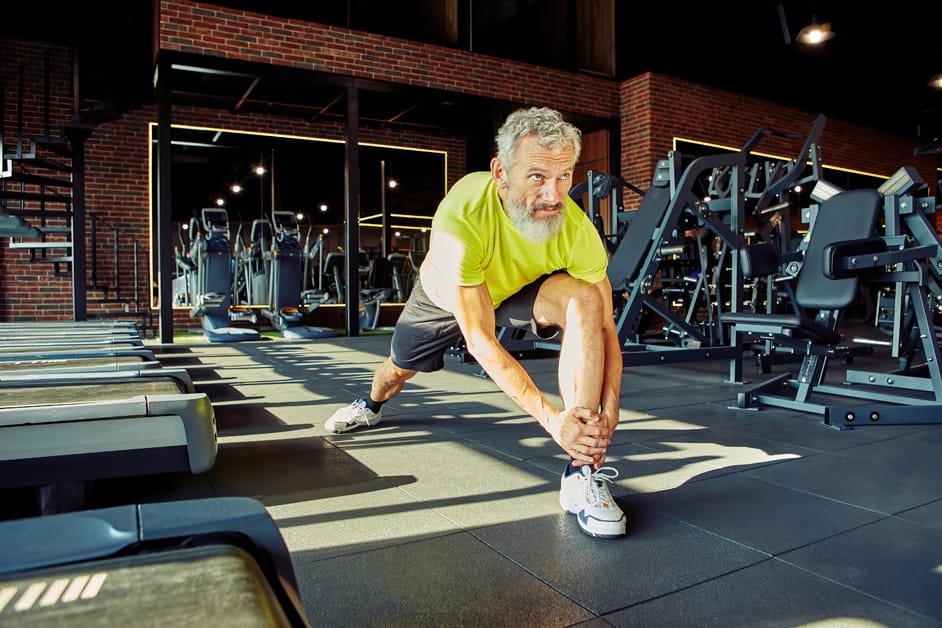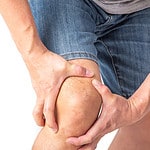Introduction
Dynamic warm-ups are key for improving the range, flexibility and strength of your knees. Plus, they lower the possibility of knee injury and chronic pain. In this guide, we’ll show the best dynamic knee pain warm-up exercises to ease your sore knees and make physical activities easier.
Dynamic warm-ups are stretches that target particular muscle groups. They can boost joint flexibility, reduce injury risk, boost muscle activity, reduce knee pain, and loosen any tightness near the area. Remember to do a dynamic warm-up before any physical activity or sport to lessen aches and pains from osteoarthritis and other causes.
Experts suggest dynamic warm-ups like:
- Shoulder rolls
- Hip circles
- Neck rotations
- Leg swings
- Calf raises
- Walking lunges
The point is to make sure your muscles stay agile and enhance coordination among different parts of your body before you exercise or play sports.
Benefits of Dynamic Warm-Up Exercises
Dynamic warm-up exercises can protect and strengthen the knee. Research suggests these exercises can reduce knee pain and improve range of motion. Plus, enhance stability. This guide will cover all the benefits.
- Improved flexibility & mobility are among them!
- It also reduces the risk of injury.
Improved Mobility
Dynamic warm-up exercises for knee pain can bring many benefits. They involve actively moving your joints and engaging surrounding muscles. This helps improve range of motion, letting you move better. It also makes it easier to maintain good posture during daily activities. Doing a comprehensive dynamic stretching routine can help reduce post-workout stiffness. And it’s important to warm up before any sport, as it helps prevent injuries.
Improved Strength
Having strong muscles is key to support the knee joint and avoid pain. Dynamic warm-up exercises are ideal to boost muscle strength. The dynamic movements you do in the warm-up can increase muscular activation and build strength in muscles important for knee stability. This includes glutes, hamstrings, quadriceps and calf muscles. Building these muscles through dynamic warm-up exercises can reduce the risk of injury. It improves coordination, motor control and posture, leading to better performance for athletes.
Additionally, research shows dynamic warm-up exercises with a wide range of motion can stimulate nerves associated with passive knee stabilizers. This can help prevent patellar instability and reduce the risk of further injury.
Reduced Risk of Injury
Dynamic warm-ups are vital pre-exercise rituals. They help reduce injury risk & boost physical performance. Regular warm-ups help athletes get their bodies ready & make use of the body’s entire range of motion. Plus, they help with functional strength & body control for safe sport & physical activity.
During a dynamic warm-up, target bigger muscle groups like glutes, quads, hamstrings & core muscles. Squat jumps are great for soccer players, helping sprint around the field & avoid knee/hamstring injuries. Punching drills with light weights (1-2 lbs.) target rotational muscles & increase coordination.
Side shuffles focus on hip movement & coordination. Walking lunges, skater hops, butt kicks, toe touches, jogging & Superman pose all have their place in a warm-up routine. This can reduce injury risk & maximize physical capabilities.
Types of Dynamic Warm-Up Exercises
Dynamic warm-up exercises are tops! They help to stop injury. For knee pain, these exercises are especially great. They focus on muscles around the knee and help to make them strong and stable.
This article gives you a complete guide for dynamic warm-up exercises for knee pain!
Lower Body Exercises
Dynamic warm-up exercises are key. They reduce risk of injury and enhance performance. Lower body exercises focus on increasing mobility and strength in hips, legs, and feet. Plus, balance and coordination.
Examples include:
- Leg Swings – stand next to wall and swing one leg forwards and backwards for 10 reps; switch sides. Side leg swings too with smaller range of motion.
- Lunge Matrix – start standing with feet hip-width apart. Step one foot forward into lunge with knee above ankle. Return to standing position. Step sideways into lunge keeping knee above ankle. Do this on other side. 10 sets alternating sides.
- Curtsy Lunges/Curtsey Squats – standing with feet together, hips width apart. Cross left knee diagonally behind right. Return to start. Repeat on other side. 10 sets alternating sides.
- Jumping Jacks – start standing with feet together and arms by sides. Jump up with legs open and clap hands over head. Jump back and move arms down. 20 reps focusing on keeping arms tight against torso.
Upper Body Exercises
Upper body exercises are important for knee pain. They help with proper posture and balance. Doing them before physical activity warms up the body, raises core temperature, and increases flexibility of joints. Strengthening small muscles like the rotator cuff can protect and stabilize the shoulder joint during exercise.
To isolate muscles in the chest, back, shoulders, and arms, use these exercises as part of a dynamic warm-up routine:
- Shoulder Rotation: Stand with feet hip distance apart. Hold arms in front with elbows bent at 90 degrees. Rotate forward 5-10 times, then rotate backward 5-10 times.
- Arm Circles: Stand with feet hip distance apart. Draw large circles, clockwise and counterclockwise, 10 times each.
- Tricep Stretch: Stand with feet hip distance apart, or kneel on one knee. Hold one arm between shoulder blades and pull elbow away from back with opposite hand until you feel a stretch in tricep.
- Bent Over Row: Stand with feet slightly wider than hip distance apart and toes facing outwards at 45 degree angle. Lean onto one leg with spine long to make a “T” shape. Pull hands up towards armpits, keeping elbows close to the body. Slowly lower using opposing muscles.
- Wall Push Ups: Stand one foot away from wall. Place palms flat against wall. Flex elbows outwards to push body away from wall. Extend out strongly and slowly so body comes back toward wall before hands come off surface.
Core Exercises
The core is the basis of dynamic warm-ups and whole body motion. Having robust and pliable core muscles grants stability, power and defends the spine during dynamic movements. It is essential to target all portions of the core; from your lower back, abs, and gluteus muscles, to make sure you are prepared for ideal performance whether you are running for health or participating in a sport.
Focusing on core exercises involves your entire body in the activity and facilitates smooth warm-up movements that get your body ready for greater performance. Here are some examples of dynamic core exercises:
- Monster Walks: Helps fortify the hip flexor muscles as well as build stability within your hips. Stand with feet wider than hip width and arms wide out to the side. Step forward with one leg and bring opposite arm into a tight fist in front of you. Maintain a tight abdomen throughout each movement. Repeat on both sides for 10 reps or 10 steps each side. Improves knee strength and alignment.
- Clamshells: Lie on one side with legs bent and 90 degree hip flexion. Engage abdominal muscles while lifting the top knee away from the bottom leg. Keep it in alignment with shoulders, hips and ankles throughout the exercise. Lower it down in a controlled manner until it touches but doesn’t push against the lower one. Do 8 reps per side to strengthen glutes muscles around knees.
- Alternating Hip Extensions: Start by standing tall with chest up. Feet set wide apart -approximately hip width distance apart – pushing through toes keeps you stable. Hinge at waist slowly dropping torso towards floor. Engage glutes without compromising form. Extend one leg back pushing off heel feeling tightness alongside gluteus. Bring knees together again back into original stance. Repeat entire procedure with opposite legs in 15 reps.
Dynamic Warm-Up Exercises for Knee Pain
Knee pain? Dynamic warm-up exercises could be the solution! These exercises can help reduce pain, enhance flexibility, and give stability. Plus, they may even prevent injuries.
Let’s take a look at what dynamic warm-up exercises are, the benefits they bring, and a list of exercises you can use to manage knee pain:
Glute Bridges
Glute bridges are important for targeting the glutes, hips and hamstrings. They also help prepare your body for activity. These dynamic warm-up exercises are good for mild to moderate knee pain. They can also be used for those without knee pain.
To do a Glute Bridge:
- Lie on your back on a yoga mat or floor. Bend both knees to 90° flexion. Place your feet flat on the ground, hip-width apart. Clench your fists under your buttocks. Push into them when lifting off the ground. Use only your lower body muscles.
- Lift up as high as you can go. Reach full extension of 45-60°. Keep your lower back flat. Maintain a steady breathing pattern. Pause at regular intervals while lowering down.
- Do 3 sets of 15 leg lifts each side.
For added challenge, try single leg Glute Bridges. This requires more control from both legs. It also requires focus and stability from both sides.
Lunges
Lunges are great for athletes of all levels! Especially those with knee pain, as they help increase mobility, reduce tension, and boost coordination and power.
To do a lunge, step forward with one leg, bending the knee at a 90 degree angle. Keep your balance in the lead and rear foot, and keep your torso upright. Lower your hips until you feel a bit of tension, but not too tight. Hold for 3 seconds per leg.
Variations of lunges include:
- Bent-knee lunge
- Reverse (step back instead of forward) lunge
- Unilateral lunge hold at top of range of motion
These exercises should be done slowly and correctly, to minimize risk of injury.
Squats
Squats are great for reducing knee pain. They strengthen the quadriceps muscle, which helps support the knee joint and manage inflammation. But, it’s important to do them with good form – back straight, chest out.
- Weight should be on the heel of the foot and the knees should line up over the toes.
- Start with a low intensity and increase it as you go. Move slowly and press through your heels when you rise.
- Count 1-5 as you squat down. Pause for 3 seconds at the bottom then count 1-5 as you rise. Keep your hips engaged at all times.
- Stay consistent. Increase reps if you can do them properly and if you are using extra weight.
Step-Ups
Step-ups are a great warm-up exercise! They help improve strength and stability in the knees and increase flexibility.
- Stand in front of a step or box and place one foot on top.
- Press through your heel to bring yourself up, while maintaining good posture with your torso upright and your abdominal muscles engaged.
- Then, lower yourself back down in one controlled movement, making sure not to let your knee cave inward.
- Look ahead for balance and stability. Don’t press through your toes, and readjust your position after each repetition.
- Aim for 10–15 repetitions each side, and alternate legs over multiple sets as desired. Keep your core engaged at all times.
- Avoid allowing momentum and bouncing off toes or heels for best results.
Calf Raises
Calf raises are essential for building the leg muscles and stretching the backs of the legs. It helps to prevent trigger points and warms up the knees to avoid pain.
Stand with your feet apart. Your toes should point forward. Lift yourself off the ground, shifting your weight to the back corners of your heels to engage your calf muscles (gastrocnemius and soleus). Hold this position for 1-2 seconds, then lower one heel at a time back down. Make sure you do it slowly and controlled, as explosive moves can harm weak or damaged knee muscles.
This exercise tones your legs and relieves knee pain, ensuring good leg health.
Conclusion
Dynamic warm-up is a must for any physical activity. This guide has discussed the best practices for knee pain and provided detailed descriptions and pictures of exercises. With practice and challenges, you can reduce knee pain and improve mobility.
This guide’s most important message is to use dynamic warm-up for better movement. To reduce discomfort in the knees and stay active longer, incorporate these exercises into your daily life. Listen to your body. Take time to recover after activity. That way, you can get the most benefit and stay safe.
Frequently Asked Questions
Q1. What are dynamic warm-up exercises?
A1. Dynamic warm-up exercises are a series of movements that are used to increase the range of motion, flexibility, and strength of the muscles and joints. They are used to prepare the body for physical activity and reduce the risk of injury.
Q2. What are the benefits of dynamic warm-up exercises for knee pain?
A2. Dynamic warm-up exercises can help reduce knee pain and improve flexibility, strength, and range of motion. They can also help reduce inflammation, improve circulation, and reduce the risk of injury.
Q3. How often should I perform dynamic warm-up exercises for knee pain?
A3. It is recommended that dynamic warm-up exercises for knee pain be performed at least 3 times a week.





